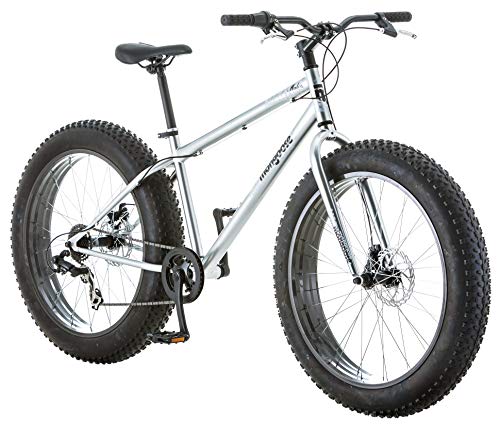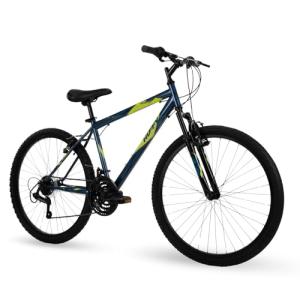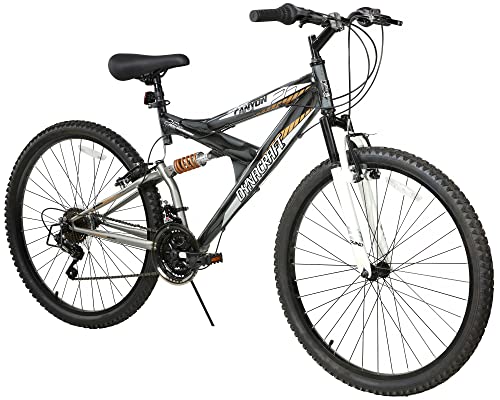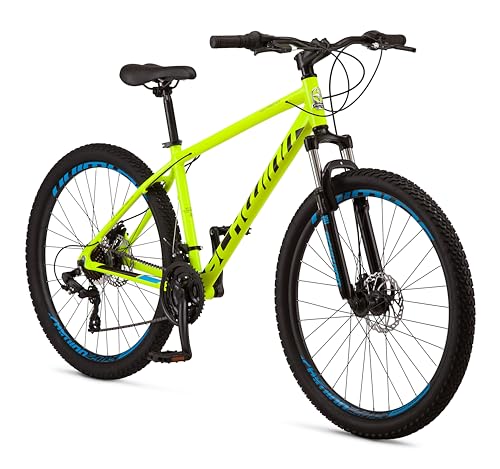Introduction
Off-road biking, often synonymous with adventure and adrenaline, encompasses a thrilling world of exploration and challenge. This article delves into the essence of off-road biking, exploring its roots, significance, and the myriad experiences it offers enthusiasts.
Definition of Off-Road Bikes
Off-road bikes, also known as all-terrain bikes or ATBs, are specialized bicycles designed to navigate rough, unpaved, and challenging terrains with ease and efficiency. Unlike their road-going counterparts, off-road bikes boast robust frames, enhanced suspension systems, and rugged tires, allowing riders to conquer trails, mountainsides, and wilderness paths.
Brief History
The origins of off-road biking trace back to the early 20th century when cyclists sought new challenges beyond paved roads. However, it wasn't until the 1970s that the sport gained significant traction with the emergence of mountain biking. Pioneered by enthusiasts in California, mountain biking rapidly evolved into a global phenomenon, inspiring the creation of specialized bikes, dedicated trails, and competitive events.
Importance of Off-Road Biking
Off-road biking holds multifaceted importance, transcending mere recreation to encompass physical fitness, mental well-being, and environmental stewardship. Firstly, it serves as a dynamic form of exercise, engaging various muscle groups and promoting cardiovascular health. Moreover, the inherent risks and technical demands of off-road biking foster resilience, focus, and problem-solving skills, contributing to mental fortitude and personal growth.
Beyond individual benefits, off-road biking fosters a profound connection with nature, offering riders intimate encounters with scenic landscapes and diverse ecosystems. This communion with the outdoors instills a sense of environmental awareness and conservation ethics, encouraging responsible stewardship of natural resources.
Furthermore, off-road biking fosters a vibrant community of enthusiasts united by a shared passion for exploration and adventure. Whether through casual group rides or competitive events, riders forge lasting friendships and camaraderie, enriching their experiences and expanding their horizons.
In essence, off-road biking transcends mere recreation, embodying a lifestyle characterized by passion, resilience, and a deep reverence for nature. As we embark on this journey through the world of off-road biking, let us embrace the exhilaration of the trail and the boundless possibilities it holds.
Types of Off-Road Bikes
Off-road biking encompasses a diverse array of bike types, each tailored to specific terrains and riding styles. Understanding the nuances of these bikes is essential for selecting the most suitable option based on individual preferences and intended use.
Mountain Bikes
Mountain bikes (MTBs) are the quintessential off-road machines, designed to tackle rugged trails, steep descents, and technical obstacles with aplomb. They come in various configurations, offering distinct advantages for different riding scenarios.
Hardtail
Hardtail mountain bikes feature suspension forks in the front but lack rear suspension, providing a responsive and efficient ride. They excel on smooth to moderately rough terrain, making them popular choices for cross-country riding and trail exploration.
Full Suspension
Full suspension mountain bikes boast both front and rear suspension systems, offering enhanced comfort, traction, and control over rough terrain. They absorb bumps and impacts more effectively, making them ideal for aggressive downhill riding, technical trails, and challenging terrain.
Fat Bikes
Fat bikes are characterized by their oversized tires, typically ranging from 3.8 to 5 inches in width, mounted on wide rims. This unique design allows fat bikes to float over soft surfaces like snow, sand, and mud with remarkable stability and traction.
Characteristics
The defining feature of fat bikes is their exceptionally wide tires, which are run at low pressure to increase surface contact and provide traction on loose or unstable terrain. This enables fat bikes to tackle a wide range of surfaces, from snowy trails to sandy beaches, with ease.
Terrain Suitability
Fat bikes excel in environments where traditional mountain bikes struggle, such as deep snow, soft sand, and muddy trails. Their flotation capabilities and traction make them popular choices for winter riding, beach cruising, and off-road exploration in challenging conditions.
Cyclocross Bikes
Cyclocross bikes blur the lines between road and off-road cycling, combining elements of both for versatile performance in various riding scenarios. Originally designed for cyclocross racing, these bikes have evolved to serve recreational riders and commuters alike.
Features
Cyclocross bikes feature lightweight frames, drop handlebars, and narrow tires with knobby treads, offering agility, speed, and traction on a variety of surfaces. They typically incorporate disc brakes for reliable stopping power in wet and muddy conditions, enhancing control and safety.
Racing vs. Recreational Use
While cyclocross bikes are renowned for their agility and speed in racing environments, they also excel as versatile all-terrain machines for recreational riders. Their blend of road-bike efficiency and off-road capability makes them popular choices for commuting, gravel riding, and adventure touring.
Advantages and Disadvantages
Cyclocross bikes offer a balanced combination of speed, agility, and versatility, making them well-suited for a wide range of riding applications. However, their narrow tire clearance and aggressive geometry may limit their suitability for extremely rough or technical off-road terrain compared to dedicated mountain bikes.
Components of an Off-Road Bike
To fully appreciate the capabilities of off-road bikes, it's essential to understand the intricacies of their components, each meticulously engineered to withstand the rigors of rough terrain and demanding riding conditions.
Frame
The frame serves as the foundation of an off-road bike, providing structural integrity, stability, and support for all other components. Off-road bike frames are typically constructed from lightweight yet durable materials such as aluminum, carbon fiber, or steel, each offering unique advantages in terms of strength, stiffness, and weight.
Suspension
Off-road biking demands effective suspension systems to absorb impacts, maintain traction, and enhance rider comfort on rough terrain. Suspension components consist of:
Fork
The front suspension fork is a pivotal component of off-road bike design, absorbing impacts from uneven terrain and smoothing out the ride. Modern forks feature adjustable damping and travel settings, allowing riders to tailor their suspension setup to specific trail conditions and riding preferences.
Rear Shock
Full suspension off-road bikes are equipped with rear shocks to complement the front fork, providing balanced suspension performance and control over rough terrain. Rear shocks come in various configurations, including air springs and coil springs, each offering distinct characteristics in terms of responsiveness, adjustability, and tunability.
Brakes
Braking performance is critical for off-road biking, providing riders with the confidence and control to navigate technical descents and obstacles safely. Off-road bikes typically feature:
Disc Brakes
Disc brakes offer superior stopping power and modulation compared to traditional rim brakes, making them the preferred choice for off-road riding. They provide consistent performance in wet and muddy conditions, ensuring reliable braking even in adverse weather or terrain.
Rim Brakes
While less common on modern off-road bikes, rim brakes remain a viable option for certain applications, such as lightweight cross-country racing or gravel riding. However, they may lack the stopping power and modulation of disc brakes, particularly in challenging off-road conditions.
Wheels and Tires
Off-road bike wheels and tires play a crucial role in determining traction, stability, and performance on diverse terrain types. Key considerations include:
Tire Width
Off-road bike tires vary in width, tread pattern, and construction, each influencing grip, rolling resistance, and durability. Wider tires provide increased traction and stability on loose or uneven surfaces, while narrower tires offer lower rolling resistance and efficiency on smoother terrain.
Tubeless vs. Tubed
Tubeless tire setups have become increasingly popular in off-road biking, offering benefits such as reduced risk of pinch flats, lower tire pressures for enhanced traction, and the ability to seal punctures on the trail. However, they require compatible rims and sealant to maintain air pressure and reliability. Traditional tubed tire setups remain viable alternatives, particularly for riders seeking simplicity and affordability.
Gear and Accessories for Off-Road Biking
Equipping yourself with the right gear and accessories is essential for maximizing safety, comfort, and enjoyment during off-road biking adventures. From protective gear to essential tools, each item serves a crucial role in enhancing your riding experience.
Helmets
A high-quality helmet is the most critical piece of safety equipment for off-road biking, providing vital protection for your head in the event of a crash or impact. When choosing a helmet, look for features such as:
Impact Protection: Helmets with robust construction and impact-absorbing materials such as expanded polystyrene (EPS) or multi-directional impact protection system (MIPS) technology offer superior protection against head injuries.
Ventilation: Adequate ventilation is essential for comfort during long rides, especially in warm weather. Look for helmets with ample vents and airflow channels to prevent overheating.
Fit and Adjustability: A properly fitting helmet is essential for safety and comfort. Look for helmets with adjustable retention systems and sizing options to ensure a snug, secure fit.
Gloves
Off-road biking gloves provide grip, protection, and comfort while riding, shielding your hands from impacts, vibrations, and trail debris. Key features to consider when choosing gloves include:
Padding: Gloves with strategically placed padding on the palms provide cushioning and shock absorption, reducing fatigue and discomfort during long rides.
Grip: Look for gloves with silicone or synthetic leather palm overlays for enhanced grip and control, especially in wet or muddy conditions.
Breathability: Breathable fabrics and ventilation panels help wick moisture away from your skin, keeping your hands dry and comfortable during intense riding sessions.
Protective Gear
Off-road biking involves inherent risks, making protective gear essential for minimizing the risk of injury in the event of a crash or fall. Common protective gear includes:
Knee and Elbow Pads
Knee and elbow pads provide crucial protection for vulnerable joints during off-road biking. Look for pads with impact-absorbing foam padding and durable outer shells for maximum protection and durability.
Body Armor
Body armor, such as chest protectors and spine guards, offers additional protection for your torso and back in high-impact crashes or collisions. Choose armor with adjustable straps and breathable materials for a comfortable fit and unrestricted movement.
Hydration Packs
Staying hydrated is essential during off-road biking adventures, especially in hot or humid conditions. Hydration packs allow you to carry water and other essentials comfortably while riding, ensuring you stay hydrated without having to stop frequently. Look for hydration packs with:
Hydration Reservoir: Opt for packs with a hydration reservoir or bladder and a drinking hose for convenient, hands-free access to water while riding.
Storage Capacity: Choose a pack with sufficient storage space for carrying essentials such as snacks, tools, spare tubes, and personal items.
Comfort Features: Look for packs with padded shoulder straps, adjustable sternum straps, and breathable back panels for maximum comfort during long rides.
Tools and Repair Kits
Being self-sufficient on the trail is essential for off-road bikers, as mechanical issues or flat tires can occur at any time. Carrying a compact toolkit and repair kit allows you to perform essential repairs and maintenance on the trail, keeping your bike in optimal condition. Key items to include in your toolkit and repair kit include:
Multi-Tool: A multi-tool with various Allen keys, screwdrivers, and other essential tools allows you to perform common repairs and adjustments on the trail.
Tire Repair Kit: Carry a tire repair kit with patches, tire levers, and a portable pump or CO2 inflator to fix flat tires quickly and efficiently.
Chain Tool: A chain tool allows you to repair or replace a broken chain on the trail, ensuring you can continue riding without interruption.
By investing in high-quality gear and accessories tailored to off-road biking, you can enhance your safety, comfort, and enjoyment while exploring rugged trails and challenging terrain. Whether embarking on a casual ride or tackling a technical mountain descent, the right gear ensures you're prepared for whatever the trail throws your way.
Training and Skills Development
Off-road biking requires more than just physical fitness; it demands a combination of technical skill, mental focus, and trail awareness to navigate challenging terrain safely and efficiently. Developing and honing these skills is essential for riders of all levels, from beginners to seasoned veterans.
Bike Handling Techniques
Mastering fundamental bike handling techniques is crucial for navigating technical terrain, maintaining control, and avoiding crashes. Key skills to focus on include:
Cornering
Effective cornering allows riders to maintain speed and control through tight turns and switchbacks. Focus on proper body positioning, weight distribution, and line selection to maximize traction and stability through corners.
Climbing and Descending
Climbing and descending require different techniques to navigate steep inclines and descents safely and efficiently. Practice maintaining a consistent cadence, shifting gears effectively, and using body positioning to optimize traction and stability on climbs and descents.
Endurance Training
Off-road biking often involves long rides and challenging terrain, making endurance training essential for building stamina and resilience on the trail. Incorporate a mix of aerobic workouts, interval training, and strength exercises to improve cardiovascular fitness, muscular endurance, and overall performance.
Trail Etiquette and Safety
Respecting trail etiquette and prioritizing safety is essential for fostering a positive riding experience and minimizing conflicts with other trail users. Familiarize yourself with local trail rules and regulations, yield to other users when appropriate, and communicate effectively with fellow riders to ensure a safe and enjoyable experience for everyone.
Advanced Skills: Jumps and Drops
For riders seeking to push their limits and tackle more technical terrain, mastering advanced skills such as jumps and drops opens up new possibilities for exploration and progression. Start with smaller features and gradually progress to larger jumps and drops, focusing on proper technique, body positioning, and confidence-building exercises to improve skill and confidence levels over time.
By dedicating time and effort to training and skills development, off-road bikers can enhance their riding abilities, boost confidence, and unlock new levels of enjoyment and achievement on the trail. Whether you're a beginner looking to build a strong foundation or an experienced rider seeking to push your limits, there's always room for growth and improvement in the world of off-road biking.
Choosing the Right Off-Road Bike
Selecting the perfect off-road bike is a crucial step in maximizing enjoyment and performance on the trail. With a wide range of options available, understanding key considerations and conducting thorough research is essential for making an informed decision that aligns with your riding preferences and goals.
Assessing Terrain and Riding Style
Before purchasing an off-road bike, consider the types of terrain you'll be riding on most frequently and your preferred riding style. Different bikes are optimized for specific conditions and disciplines, so matching your bike choice to your intended riding environment is crucial for optimal performance and comfort.
Budget Considerations
Off-road bikes vary widely in price, ranging from budget-friendly entry-level models to high-end performance machines. Establishing a realistic budget based on your financial resources and riding aspirations is essential for narrowing down your options and finding the best value within your price range.
Test Riding and Sizing
Never underestimate the importance of test riding and sizing when choosing an off-road bike. Visiting local bike shops and test riding various models allows you to experience how different bikes feel on the trail and determine which one best suits your riding preferences and body proportions.
Researching Brands and Models
With numerous bike brands and models on the market, conducting thorough research is essential for identifying reputable brands, reliable models, and standout features that align with your needs and preferences. Reading reviews, seeking recommendations from fellow riders, and consulting with knowledgeable bike shop staff can provide valuable insights and guidance during the decision-making process.
By carefully considering terrain, riding style, budget, and personal preferences, off-road bikers can make informed decisions when choosing the perfect bike for their needs. Whether you're embarking on leisurely trail rides, competitive races, or epic adventures, investing in the right off-road bike sets the stage for countless hours of exhilarating exploration and enjoyment in the great outdoors.
Maintenance Tips for Off-Road Bikes
Maintaining your off-road bike is essential to ensure it performs at its best on the trail. Proper care not only extends the lifespan of your bike but also enhances your riding experience and safety. Here are some essential maintenance tips to keep your off-road bike in top condition:
Cleaning and Lubrication
Regular cleaning and lubrication are fundamental for preserving the performance and longevity of your off-road bike:
Cleaning: After each ride, use a gentle bike-specific cleaner or mild soap and water to remove dirt, mud, and grime from your bike's frame, drivetrain, and components. Pay close attention to hard-to-reach areas like the cassette, chainrings, and derailleur pulleys.
Drying: Thoroughly dry your bike with a clean towel or cloth to prevent water from sitting on metal surfaces and causing corrosion. Use a brush to remove stubborn dirt from crevices and hard-to-reach areas.
Lubrication: Apply a bicycle-specific lubricant to your chain, derailleur pivots, and other moving parts after cleaning and drying your bike. Wipe off any excess lubricant to prevent attracting dirt and grime.
Suspension Setup and Maintenance
Proper suspension setup and maintenance are critical for optimal performance and comfort on the trail:
Setup: Adjust your suspension settings, including sag, rebound, and compression, to match your weight, riding style, and trail conditions. Refer to your bike's manual or consult a professional bike mechanic for guidance on optimal suspension setup.
Maintenance: Regularly inspect your suspension components for signs of wear, damage, or leaks. Clean and lubricate stanchions regularly to prevent dirt buildup and ensure smooth operation. Service suspension seals and bushings as needed to maintain performance and prevent premature wear.
Checking for Wear and Tear
Regularly inspecting your bike for signs of wear and tear helps identify potential issues before they become major problems:
Frame Inspection: Check your bike's frame for cracks, dents, or other damage, especially around welds and high-stress areas. Pay attention to any changes in the frame's appearance or performance, such as unusual noises or handling characteristics.
Brake Pad and Rotor Wear: Inspect your brake pads and rotors for signs of wear, contamination, or damage. Replace worn brake pads and damaged rotors promptly to maintain braking performance and safety on the trail.
Regular Tune-Ups and Service
Scheduling regular tune-ups and service appointments with a qualified bike mechanic is essential for keeping your off-road bike in top condition:
Routine Maintenance: Schedule routine maintenance appointments to check and adjust critical components such as brakes, gears, and bearings. A professional bike mechanic can identify and address minor issues before they escalate into major problems.
Preventive Care: Invest in preventive maintenance measures such as replacing worn components, upgrading outdated parts, and installing protective accessories to extend the lifespan of your bike and enhance its performance on the trail.
By following these maintenance tips and practices, off-road bikers can ensure their bikes remain in peak condition, ready for whatever adventures the trail may hold. Remember, regular care and attention go a long way toward preserving the performance, longevity, and safety of your off-road bike.
Popular Off-Road Biking Destinations
Exploring off-road biking destinations offers enthusiasts the opportunity to experience diverse landscapes, challenging trails, and breathtaking scenery. Whether you're seeking adrenaline-pumping downhill descents, technical singletrack, or scenic gravel routes, there's a destination to suit every rider's preferences and skill level.
National Parks and Forests
Yellowstone National Park, USA: Home to a vast network of trails ranging from easy scenic rides to challenging backcountry routes, Yellowstone offers off-road bikers unparalleled access to stunning natural wonders such as geysers, hot springs, and wildlife.
Whistler Bike Park, Canada: Renowned as one of the premier mountain biking destinations in the world, Whistler Bike Park features a diverse array of trails catering to all skill levels, from beginner-friendly flow trails to expert-level technical descents and jump lines.
Purpose-Built Trails
Santos Fat Tire Festival, Florida, USA: Hosted annually in Ocala, Florida, the Santos Fat Tire Festival showcases over 80 miles of purpose-built mountain bike trails catering to riders of all abilities. With a variety of features including berms, jumps, and rock gardens, Santos offers endless opportunities for off-road adventure.
Coed Llandegla Forest, Wales, UK: Located in the heart of North Wales, Coed Llandegla Forest boasts a network of well-maintained trails suitable for mountain bikers of all levels. From scenic cross-country routes to adrenaline-pumping downhill descents, Llandegla offers something for everyone.
International Destinations
Rotorua, New Zealand: Dubbed the "Mountain Biking Capital of the World," Rotorua offers an unparalleled array of trails set amidst stunning geothermal landscapes and lush forests. From flowing singletrack to challenging downhill tracks, Rotorua caters to riders of all skill levels and disciplines.
Finale Ligure, Italy: Nestled along the Italian Riviera, Finale Ligure is a mecca for mountain bikers seeking epic coastal trails and Mediterranean views. With over 300 kilometers of trails ranging from rocky descents to scenic ridgeline rides, Finale Ligure offers endless opportunities for off-road adventure.
Exploring these popular off-road biking destinations allows riders to immerse themselves in diverse landscapes, challenge their skills, and connect with fellow enthusiasts from around the world. Whether embarking on a solo adventure or joining a guided tour, these destinations offer unforgettable experiences for off-road bikers of all levels.
Conclusion Off Road Bikes
As off-road biking continues to capture the hearts and imaginations of enthusiasts worldwide, the allure of exploring rugged trails and breathtaking landscapes remains as strong as ever. Throughout this exploration of off-road biking, we've delved into its rich history, diverse bike types, essential components, and the importance of gear, training, and maintenance.
From the adrenaline rush of tackling technical descents to the serene beauty of winding through pristine forests, off-road biking offers a wealth of experiences for riders of all backgrounds and skill levels. Whether you're seeking thrills, adventure, or simply a connection with nature, the world of off-road biking beckons with endless possibilities.
As we conclude this journey, let us not only celebrate the exhilaration of the trail but also embrace the camaraderie, resilience, and appreciation for the great outdoors that off-road biking fosters. Whether you're embarking on your first off-road adventure or a seasoned veteran of the trail, may your rides be filled with joy, discovery, and the pure freedom that comes from exploring the world on two wheels.







